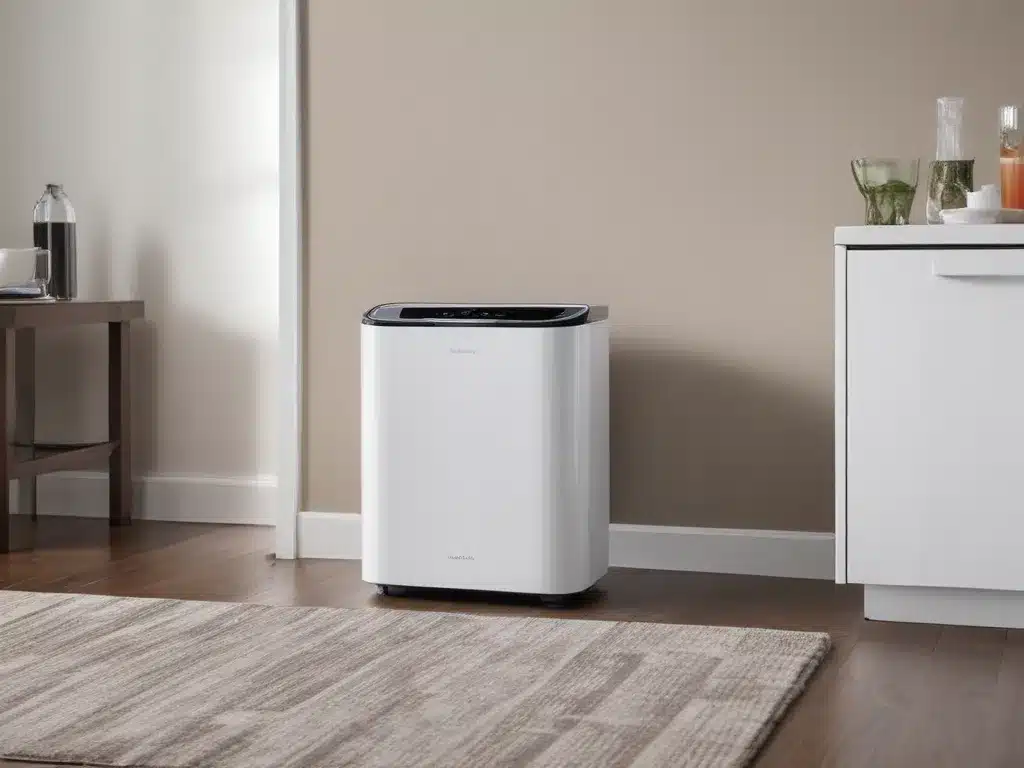Introduction
As technology continues to evolve, the way we interact with our homes is changing rapidly. Voice-activated appliances are at the forefront of this transformation, promising to revolutionize the way we clean and maintain our living spaces. These smart devices are not only convenient but also offer a level of efficiency and automation that was once unimaginable.
In this article, I will explore the world of voice-activated appliances for home cleaning, delving into their capabilities, benefits, and potential drawbacks. We will also discuss the current state of the market and what the future may hold for this exciting technology.
What are Voice-Activated Appliances?
Voice-activated appliances are home devices that can be controlled using voice commands. These appliances are equipped with speech recognition technology, allowing them to interpret and respond to verbal instructions. Some common examples of voice-activated appliances for home cleaning include:
- Voice-controlled robotic vacuums
- Voice-operated washing machines
- Voice-enabled dishwashers
- Voice-activated air purifiers
These appliances can be integrated with virtual assistants like Amazon’s Alexa, Google Assistant, or Apple’s Siri, enabling seamless voice control and connectivity throughout the smart home ecosystem.
Benefits of Voice-Activated Appliances
Voice-activated appliances offer several advantages over traditional home cleaning devices:
-
Hands-Free Operation: With voice control, you can operate appliances without physically interacting with them, making it easier to multitask or perform other activities while cleaning.
-
Accessibility: Voice commands can be particularly beneficial for individuals with physical disabilities or mobility limitations, allowing them to control appliances without the need for manual operation.
-
Convenience: Voice commands streamline the cleaning process, eliminating the need to navigate through menus or adjust settings manually.
-
Integration with Smart Home Ecosystem: Many voice-activated appliances can be integrated with other smart home devices, enabling you to control multiple aspects of your home with simple voice commands.
-
Energy Efficiency: Some voice-activated appliances can optimize their energy consumption based on user preferences and usage patterns, potentially leading to cost savings and environmental benefits.
Current Market Landscape
The market for voice-activated appliances is rapidly expanding, with major appliance manufacturers embracing this technology. Companies like Samsung, LG, Whirlpool, and GE are offering a range of voice-controlled appliances for home cleaning.
However, it’s important to note that not all voice-activated appliances are created equal. Some may have limited functionality or compatibility issues with certain virtual assistants or smart home ecosystems. It’s crucial to research and compare different models to find the one that best suits your needs and integrates seamlessly with your existing smart home setup.
Potential Challenges and Drawbacks
While voice-activated appliances offer many advantages, there are also potential challenges and drawbacks to consider:
-
Privacy Concerns: As with any voice-enabled technology, there may be concerns about data privacy and the potential for unauthorized access or eavesdropping.
-
Connectivity Issues: Voice-activated appliances rely on a stable internet connection and reliable network infrastructure. Connectivity issues or network outages can disrupt the functionality of these devices.
-
Learning Curve: While voice commands aim to simplify the user experience, there may be a learning curve for users who are unfamiliar with the technology or the specific voice commands required for their appliances.
-
Cost: Voice-activated appliances can be more expensive than their traditional counterparts, which may deter some consumers from adopting this technology.
-
Compatibility Challenges: As the smart home ecosystem continues to evolve, there may be compatibility issues between different manufacturers’ appliances and virtual assistants, potentially limiting the integration and functionality of these devices.
The Future of Voice-Activated Appliances
The future of voice-activated appliances for home cleaning looks promising, with ongoing advancements in speech recognition technology, artificial intelligence, and smart home integration. Here are some potential developments we may see:
-
Improved Voice Recognition: As voice recognition algorithms become more sophisticated, appliances will be able to better understand and respond to natural language commands, making the user experience even more seamless and intuitive.
-
Predictive Cleaning: Appliances may be able to learn and predict user behavior, automatically adjusting cleaning schedules or settings based on usage patterns and preferences.
-
Enhanced Integration: Voice-activated appliances will likely become more tightly integrated with other smart home devices and systems, enabling more comprehensive automation and control over various aspects of home cleaning and maintenance.
-
Personalization: Appliances may offer personalized settings and preferences based on individual user profiles, allowing for a tailored cleaning experience.
-
Energy Optimization: As energy efficiency becomes a greater priority, voice-activated appliances may incorporate advanced algorithms and sensors to optimize energy consumption based on real-time usage data and environmental conditions.
Conclusion
Voice-activated appliances are undoubtedly the next frontier in smart home cleaning. These innovative devices offer convenience, accessibility, and integration with the broader smart home ecosystem. While there are potential challenges and drawbacks to consider, the benefits of hands-free operation and streamlined cleaning processes make voice-activated appliances an attractive option for many households.
As technology continues to evolve, we can expect to see even more advanced and intelligent voice-activated appliances that seamlessly integrate into our daily lives, making home cleaning more efficient, personalized, and sustainable.







